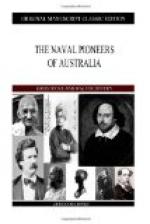Hunter and his crew were left at Norfolk Island [Sidenote: 1792] for many weary months before a vessel could be obtained in which to send them to England, and it was not until the end of the following March—a year after the loss of their ship—that they sailed from Sydney in the Waaksamheyd, a small Dutch snow.[D]
[Footnote D: A favourite rig of that period. A snow was similar to a brig, except that she carried upon a small spar, just abaft the mainmast, a kind of trysail, then called the spanker.]
In this miserable little vessel Hunter made a remarkable voyage home, of which he gives an account in his book. His official letter to the Secretary of the Admiralty, dated Portsmouth, April 23rd, 1792, tells in a few words what sort of a passage could be made to England in those days. He writes:—
“You will be pleased to inform their lordships that upon my arrival from Norfolk Island at Port Jackson (26th February, 1791) I found that Governor Phillip had contracted with the master of a Dutch snow, which had arrived at that port from Batavia with a cargo of provisions purchased there for the use of the settlement, for a passage to England for the remaining officers and company of His Majestie’s late ship the Sirius, under my command, in consequence of which agreement I was directed to embark, and we sail’d from Port Jackson on the 27th of March, victuall’d for sixteen weeks, and with fifty tons of water on board. We were in all on board 123 people, including those belonging to the vessel.... We steer’d to the northward, and made New Caledonia 23 April, and passed to the westward of it. As the master did not feel himself qualified to navigate a ship in these unknown seas, he had, upon our leaving Port Jackson, requested my assistance, which he had. In sailing to the northward we fell in with several islands and shoals, the situations of which we determined.... No ship that I have heard of having sail’d between New Britain and New Ireland since that




